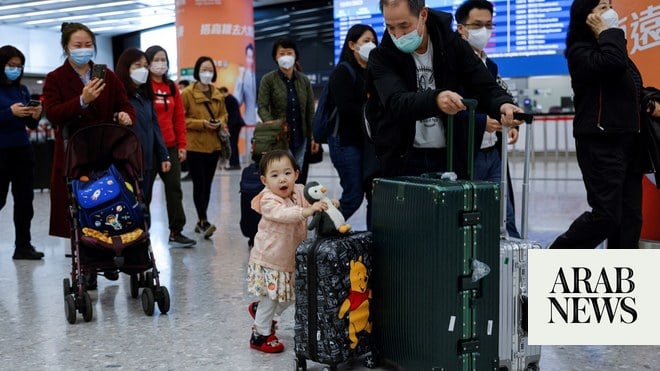
RIYADH: China’s economic growth for 2022 is expected to have been among its weakest in four decades after the twin crises of the COVID-19 pandemic and property woes, analysts said ahead of Tuesday’s gross domestic product announcement.
Experts interviewed by AFP forecast an average 2.7 percent year-on-year rise in GDP for the world’s second-largest economy, a sharp plunge from China’s 2021 growth of more than 8 percent.
It could also be China’s slowest pace since a 1.6 contraction in 1976 — the year Mao Zedong died — and excluding 2020, after the COVID-19 virus emerged in Wuhan in late 2019.
Beijing had set itself a growth target of around 5.5 percent for 2022 but this was undermined by the government’s “zero-COVID” policy, which put the brakes on manufacturing activity and consumption.
Strict lockdowns, quarantines and compulsory mass testing prompted abrupt closures of manufacturing facilities and businesses in major hubs — like Zhengzhou, home of the world’s biggest iPhone factory — and sent reverberations across the global supply chain.
Beijing abruptly loosened pandemic restrictions in early December after three years of enforcing some of the harshest COVID-19 measures in the world.
China is battling a surge in COVID-19 cases that has overwhelmed its hospitals and medical staff. This is likely to reflect in 2022’s fourth-quarter growth, which will also be announced on Tuesday alongside a series of other indicators such as retail, industrial production and employment.
The World Bank forecast China’s GDP will rebound to 4.3 percent for 2023 — still below expectations.
Travel
People in China are resuming travel ahead of the Lunar New Year, despite worries about infections after Beijing dropped COVID-19 curbs last month, with air passenger volumes recovering to 63 percent of 2019 levels since the annual travel season began.
The rapid business recovery is challenging airlines’ ability to ensure safety, and great attention to pandemic-related risks is needed, said Song Zhiyong, head of the Civil Aviation Administration of China.
The industry needs to “fully understand the special nature, and complexity of the Spring Festival migration in 2023,” Song said in a statement on Friday.
Since the Jan. 7 start of the annual migration, as Chinese return to their hometowns in preparation for the holiday set to begin on Jan. 21, flight passenger numbers stand at 63 percent of the 2019 figure before the pandemic, the aviation regulator said.
High-speed rail
China resumed on Sunday high-speed rail services between Hong Kong and the mainland for the first time since the beginning of the COVID-19 pandemic, as it dismantles travel curbs after Beijing scrapped quarantine for arrivals a week earlier.
The re-opening comes amidst a massive wave of infections nationwide and a day after authorities said nearly 60,000 people with COVID-19 had died in hospital.
Despite the infections, some passengers voiced excitement and relief about being able to more easily return to their hometowns in time for the approaching Lunar New Year.
“The resumption of the high-speed railway has made it very convenient for us and has brought us closer to home,” said Mang Lee, 33, who was among dozens going through border checks at Hong Kong’s West Kowloon station before boarding trains.
Tickets for nearly all trains were sold out on Sunday, a display at the station showed, a Reuters witness said.
The re-opening will initially be just for short journeys, MTR chairman Rex Auyeung told reporters at the station, but it was not immediately clear when long-haul journeys would resume.










